Artificial intelligence (AI), like other technologies in the past, will likely affect the economy in many ways, potentially stimulating growth and changing the way people work.11 The effect of AI on work will be multifaceted and will likely vary across occupations and industries.4 The public release of tools such as Dall-E 2, which generates digital images from natural language prompts, in September 2022 and ChatGPT, which generates text responses to natural language prompts, in November 2022 has drawn the attention of the general public to progress in generative AI technologies, stimulating excitement in the potential of these technologies, but also concern over potential negative effects on employment. The expanded scope of uses presented by generative AI technologies has raised questions regarding whether such technologies may affect a broader range of occupations, including those that are highly creative.16
Recent research, including our own9 and work by the Pew Research Center,12 suggests there is a strong positive correlation between exposure to generative AI and median salaries, the required level of education, and the presence of creative abilities within an occupation, and that occupations with a higher percent of female or Asian workers are more exposed, whereas occupations with a higher percent of Black or Hispanic workers are less exposed to generative AI. The big unknowns are the conditions under which generative AI will substitute for work previously done by humans, or complement work done by humans (for example, Frank et al.10 While recent research suggests that generative AI is likely to increase high-skill worker productivity, especially for lower-performing workers (for example, Choi and Schwarcz,6 Dell’Acqua et al.,7 Noy and Zhang,14 and Peng et al.14), whether and under what conditions generative AI automates vs. augments workers remains an important and, to our knowledge, unanswered question.
We highlight two ways in which the government can help address heterogeneous effects from advances in AI. First, statistical agencies should work with academic scholars to develop an understanding about conditions under which AI automates or augments human work. Second, the uncertain and different effects across occupations means initial labor policies need to be flexible and broad-based, not targeted at specific occupations or groups.
Heterogeneous Occupational Exposure to Generative AI
In our research, we use the methodology described in Felten et al.8 to determine occupational exposure to language modeling and image generation. This methodology links AI applications (for example, image generation, language modeling) to human abilities (for example, oral comprehension, oral expression, inductive reasoning, arm-hand steadiness, and so forth). The abilities are then linked to occupations using a database developed by the U.S. Department of Labor to develop occupational level measures of exposure to generative AI. We combine these exposure measures with other occupational and demographic data from the Department of Labor and U.S. Census Bureau to assess how exposure to advances in generative AI correlates with occupational and demographic characteristics, as described in Felten et al.9
We present these relationships visually in the accopanying figure, using binned scatter plots of the measures of exposure to advances in generative AI (y-axis) and occupational and demographic characteristics (x-axis). The figure depicts a positive correlation between exposure to generative AI and salary, education, and the presence of creative abilities. The figure also depicts a positive correlation between exposure to generative AI and the proportion of female, White, and Asian employment within an occupation. In contrast, we document a negative correlation between exposure to generative AI and the proportion of Black and Hispanic employment within an occupation.
Important Roles for Statistical Agencies and Labor Policy
Literature has suggested that one possible explanation for widening economic inequality is related to skill-biased technological change—the theory that recent technological developments disproportionately increased highly educated workers’ productivity.13
Given that highly educated and highly paid workers appear to be most exposed to advances in generative AI, this finding has potential implications for income inequality. Further, as exposure to generative AI technologies differs across demographic groups, these findings have implications for which populations may most benefit or be hurt by generative AI technologies. However, to understand the distributive effects of generative AI tools, more research is needed to understand conditions under which it automates vs. augments human work.
The range of occupations exposed to advances in generative AI and the rapidity with which it seems to be adopted by firms suggest that government can play an important role to help minimize disruptions associated with worker job losses and help maximize potential gains to the economy and society from adoption and use of these new technologies. Private firms, and especially smaller firms with less resources to spare, may be hesitant to invest meaningful resources in upskilling workers, as returns on investment are uncertain particularly as upskilled workers may have increased mobility in the labor market. Accordingly, a public goods problem may emerge that can be alleviated with government intervention. Further, as the effects of generative AI technologies will differ across occupations or populations, public actors have incentives to ensure no one is left behind as markets adapt to these new tools. At the same time, mitigating potentially negative effects of these technologies on workers requires an understanding of which populations are more or less exposed and what shape that exposure takes.
We therefore propose a dual-pronged approach:
Government statistical agencies should assess how firms are using generative AI and in which ways workers are being affected to better understand where generative AI might automate vs. augment human work.
Labor policies should be flexible and broad-based, not targeted at specific occupations or groups, at least initially.
Government agencies have recently started to measure the extent to which firms are using new technologies, including AI and robots.1 Government and academic researchers have started to access this data to better understand conditions under which firms adopt these technologies and how they are used. For example, in a collaboration between academic and U.S. Census Bureau researchers, Brynjolfsson et al.4 uses data obtained through new questions added to the Annual Survey of Manufacturers to better understand the geographic distribution of robots across the U.S. and to explore what factors may drive heterogeneity.
Additional data collection over time and across industries and occupations is needed, especially to better understand when AI complements or substitutes for human workers. A good model for such data collection would be to add questions on the adoption and use of generative AI to the Annual Business Survey (ABS), which currently includes some question on AI, robots, and other new technologies, as reported recently by McElheran et al.13 In addition, government statistical agencies might consider collaborating with private sector firms to collect more “real-time” data on generative AI adoption and use by firms. All this data collection, and the careful research work that will follow, will take time. Labor market policy should not wait for these results, but should implement broad based labor policies, at least in the short term.
Investing in programs that train the workforce in new technologies will benefit both firms and workers. Such programs could take various forms including government programs (at the federal, state, and local level) that incentivize workers to find the skills they need to succeed on the labor market and programs that reward firms for investing in retraining and reskilling their workforce. As an example of the former, the U.S. Department of Labor provides funding for a number of adult job training opportunities for free or at discounted prices.a As an example of the latter, South Carolina provides tax credits to private firms that hire apprentices.
While apprenticeship programs have traditionally been utilized mostly by building trades and manufacturing industries, such programs could be expanded, perhaps with help from the federal government, to focus on a wider variety of occupations and especially those that require digital skills. Through such programs, workers will learn the digital skills that are needed to take advantage of new AI tools, which may allow workers to retain their existing jobs, even if the nature of the jobs themselves changes as a result of the new technology. In addition, a workforce trained in digital skills will benefit firms. At a minimum, firms will not need to invest as much in training, but firms may also benefit from a better educated workforce that develops new and innovative ways to use the new technology.
Further, policymakers should identify barriers to job mobility. Rapid changes to the economy brought on by generative AI means some sectors may grow quickly while others may shrink. For the sake of workers, their families, and economic growth, barriers to mobility should be removed. These barriers might include non-compete agreements, occupational licensing, and other regulations that limit entry into different occupations, and which have been shown to harm workers (see Balasubramanian et al.2).
As we gain better insight into the conditions under which generative AI automates vs. augments labor, understanding heterogeneity in occupational exposure to generative AI across populations will be beneficial to ensure targeted and well-constructed policy interventions to ensure that no one is left behind. However, in the interim, broad-based labor policies should benefit workers across all occupations, regardless of whether they are more or less exposed to advances in generative AI, and regardless of whether these advances lead to automation or augmentation.
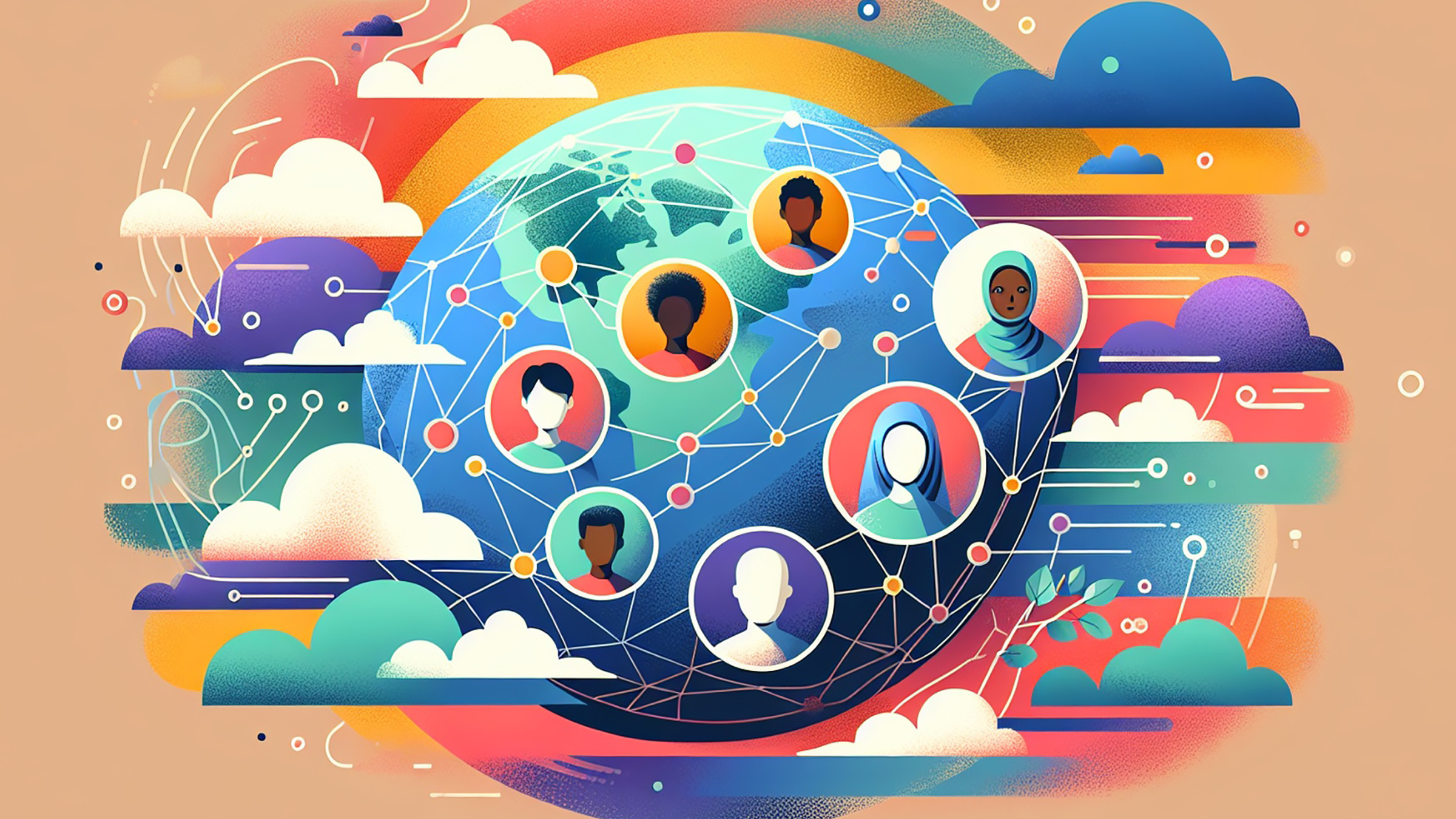

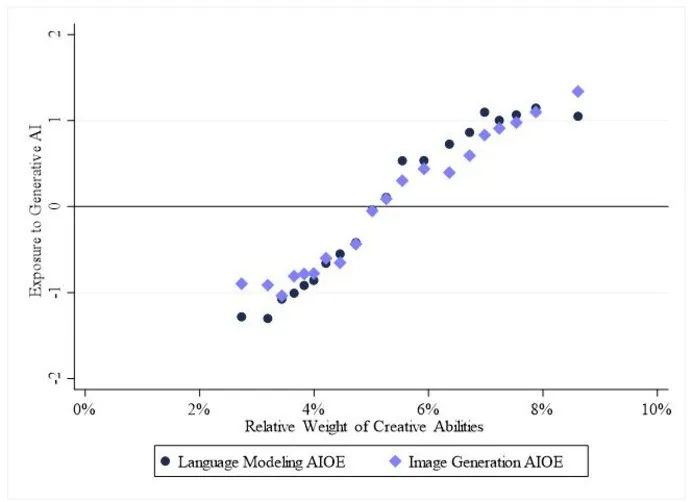
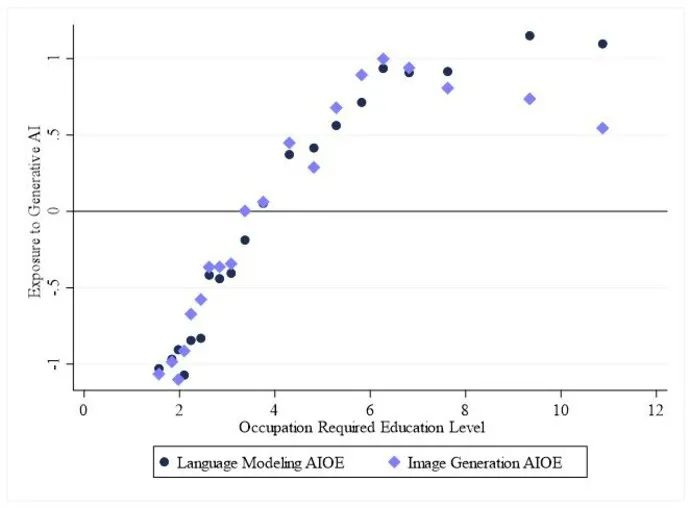

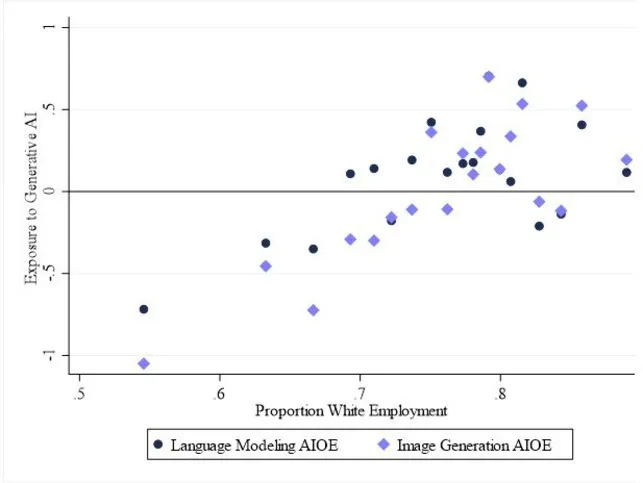
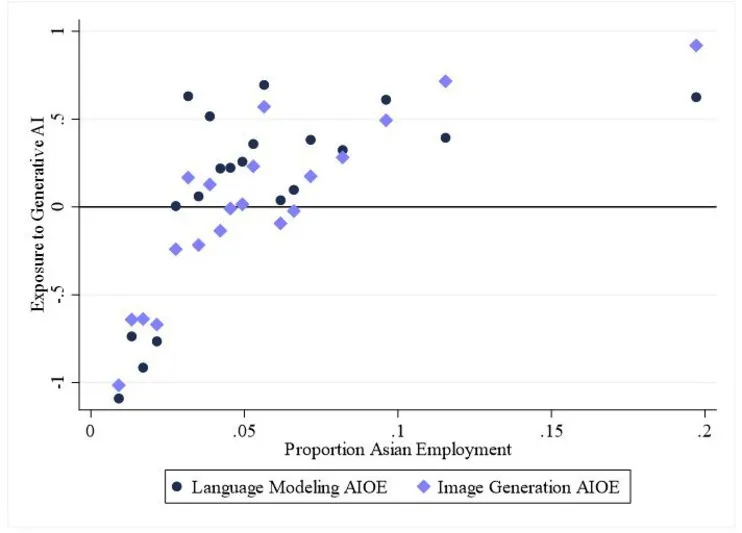

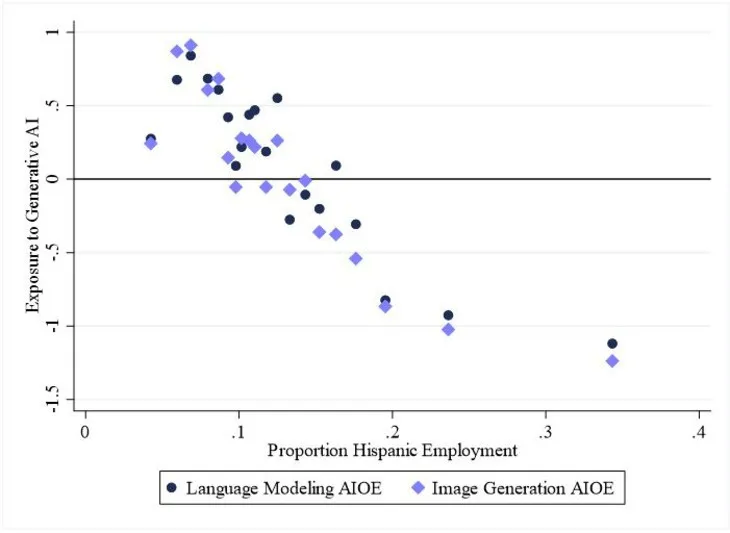



Join the Discussion (0)
Become a Member or Sign In to Post a Comment